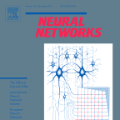In this paper, a method to mimic a human face and eyes is proposed which can be regarded as a combination of computer vision techniques and neural network concepts. From a mechanical standpoint, a 3-DOF spherical parallel robot is used which imitates the human face movement. In what concerns eye movement, a 2-DOF mechanism is attached to the end-effector of the 3-DOF spherical parallel mechanism. In order to have robust and reliable results for the imitation, meaningful information should be extracted from the face mesh for obtaining the pose of a face, i.e., the roll, yaw, and pitch angles. To this end, two methods are proposed where each of them has its own pros and cons. The first method consists in resorting to the so-called Mediapipe library which is a machine learning solution for high-fidelity body pose tracking, introduced by Google. As the second method, a model is trained by a linear regression model for a gathered dataset of face pictures in different poses. In addition, a 3-DOF Agile Eye parallel robot is utilized to show the ability of this robot to be used as a system which is similar to a human neck for performing a 3-DOF rotational motion pattern. Furthermore, a 3D printed face and a 2-DOF eye mechanism are fabricated to display the whole system more stylish way. Experiments on this platform demonstrate the effectiveness of the proposed methods for tracking the human neck and eye movement.
翻译:在本文中,提出了一种模拟人类表面和眼睛的方法,这种方法可以被视为计算机视觉技术和神经网络概念的组合。 从机械角度看,使用3-DOF球形平行机器人来模仿人类表面运动。在眼运动方面,2-DOF机制附属于3-DOF球形平行机制的终端效果器。为了产生可靠和可靠的模拟结果,应当从面部网格中提取有意义的信息,以获得脸部网格的组合,即滚动、摇摆和投球角度。为此,提议了两种方法,其中每种都有自己的利弊。第一种方法是使用所谓的媒体管道图书馆,这是谷歌为高不洁身体的跟踪提供的一种机器学习解决方案。第二个方法是用一个线性回归模型来为不同面貌的图像集成数据集进行训练。此外,一个3-DF 平行的DG 机器人平行机器人用来显示这个眼睛运动的能力。




